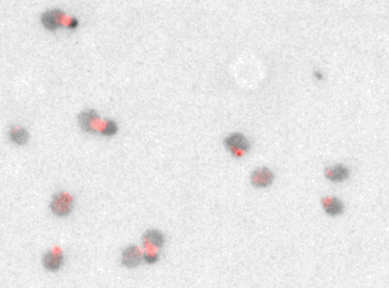The Kelley Lab at the University of Maine
The Kelley Lab studies how cells track external gradients using the classic model organism, Saccharomyces cerevisiae, or as it is more commonly known, baker’s or brewer’s yeast. We are specifically interested in the spatial and temporal regulation of G-protein Coupled Receptor signaling pathways.
Gradient tracking is a common process used by cells to sense and respond to their environment. Human cells use gradient tracking to find invading pathogens, for wound healing, for tissue development, and for cancer cell metastasis. Single celled organisms use gradient tracking to find food, or in the case of Baker’s Yeast, to find a mate.
Despite the varied purposes for gradient tracking across a wide array of organisms, the majority of gradient tracking in eukaryotes is made possible by the same basic system of homologous proteins. The extracellular signal is detected by a G-protein Coupled Receptor (GPCR), which turns on a signaling pathway inside the cell made up of a cellular on/off switch called a G-protein.


